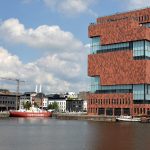The Rubenshuis, or Rubens House, is not just a museum but a portal into the life of one of the most celebrated artists of the Baroque era, Peter Paul Rubens. Located in the heart of Antwerp, this 17th-century house was both the home and studio of Rubens, offering a unique insight into his artistic genius and personal life.
The History of Rubenshuis
Peter Paul Rubens purchased the house in 1610, shortly after his marriage to Isabella Brant. Over the years, he transformed it into a grand Renaissance-style palazzo, reflective of his success and status. The house was designed with a dual purpose: to serve as a comfortable residence for his family and as a workshop where he could create his masterpieces and teach his students. After Rubens’ death in 1640, the house changed hands several times before being restored and opened as a museum in the late 1940s.
What to See at the Rubenshuis
1. The Studio
The heart of the Rubenshuis is undoubtedly the studio. This is where Rubens created many of his most famous works, including large altarpieces and portraits. The studio also served as a place of learning for his students, many of whom went on to become notable artists in their own right. Visitors can view some of Rubens’ original works and get a sense of the atmosphere in which they were created.
2. The Art Collection
Rubens was not just a painter but also an avid collector of art and antiquities. The Rubenshuis houses an impressive collection of paintings, sculptures, and decorative arts from Rubens’ time. While many of the original pieces have been dispersed, the museum has acquired similar works to recreate the ambiance of Rubens’ collection. Highlights include works by Rubens himself, as well as by his contemporaries and students.
3. The Living Quarters
Exploring the living quarters offers a more intimate glimpse into Rubens’ personal life. The rooms are furnished with period pieces, providing a sense of the domestic environment of a wealthy 17th-century family. The dining room, bedrooms, and drawing rooms reflect the elegance and comfort in which Rubens and his family lived.
4. The Garden
The Rubenshuis garden is a tranquil oasis in the middle of the city, designed in the style of an Italian Renaissance garden. Rubens himself had a hand in its design, and it served as a source of inspiration for some of his works. Today, the garden has been carefully restored to reflect its original layout, providing visitors with a peaceful retreat.
Visiting Tips
- Time Your Visit: To fully appreciate the Rubenshuis, allow at least 1.5 to 2 hours for your visit.
- Guided Tours: Consider taking a guided tour to gain deeper insights into Rubens’ life and work. Audio guides are also available in several languages.
- Exhibitions: The Rubenshuis regularly hosts temporary exhibitions that focus on various aspects of Rubens’ life, his influences, and his legacy. Check the museum’s website for current and upcoming exhibitions.
- Nearby Attractions: The Rubenshuis is located near other key attractions in Antwerp, such as the Cathedral of Our Lady and the Meir shopping street, making it easy to include in a day of sightseeing.
Final Thoughts
Rubenshuis is one of the must-visit museums in Antwerp, perfect for those interested in art, history, or the life of one of the most influential painters in Western art. The museum provides a unique opportunity to immerse yourself in the world of Peter Paul Rubens, experience his creative environment, and appreciate the enduring impact of his work.


